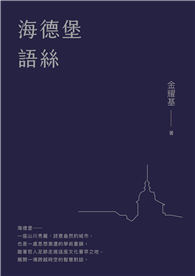The biblical book of Daniel was known to Jewish and Christian antiquity in its longer versions, preserved for us in the Greek textual tradition. Those Additions, as they came to be called (the tale of Susanna and the legends of Bel and the Dragon, the Prayer of Azariah and the Song of the Three Hebrews in the fiery furnace), have travelled on through languages and cultures and have generated long trails of interpretation, from commentary and religious iconography to fine art and domestic interiors.
This book follows three particular trails in the reception of the longer Daniel-book, tracing the themes of martyrdom, afterlife worlds, and the act of seeing beauty. Recovering and documenting the voices of ancient, medieval, and modern interpreters, we meet an assembled cast of Jewish and Christian martyrs, liturgical subjects facing purgatory or paradise, and women resisting voyeuristic viewing. All this reception, though, is a route to reading the text of Greek Daniel itself: these later interpreters move this study towards exegetical conclusions about the Jewish roots of ancient martyrdom, the importance of the book of Daniel to the expansion of afterlife spaces within Second Temple Judaism, and a defense of the ethics of narration in the text of Susanna. Drawing on methods of material philology, Jennie Grillo argues for the central place of the Additions in the readerly history of the book of Daniel, and for this longer Daniel-book’s abiding significance for theology.| FindBook |
有 1 項符合
Daniel After Babylon: The Additions in the History of Interpretation的圖書 |
 |
Daniel After Babylon: The Additions in the History of Interpretation 作者:Grillo 出版社:Oxford University Press, USA 出版日期:2024-05-16 語言:英文 規格:精裝 / 208頁 / 普通級/ 初版 |
| 圖書館借閱 |
| 國家圖書館 | 全國圖書書目資訊網 | 國立公共資訊圖書館 | 電子書服務平台 | MetaCat 跨館整合查詢 |
| 臺北市立圖書館 | 新北市立圖書館 | 基隆市公共圖書館 | 桃園市立圖書館 | 新竹縣公共圖書館 |
| 苗栗縣立圖書館 | 臺中市立圖書館 | 彰化縣公共圖書館 | 南投縣文化局 | 雲林縣公共圖書館 |
| 嘉義縣圖書館 | 臺南市立圖書館 | 高雄市立圖書館 | 屏東縣公共圖書館 | 宜蘭縣公共圖書館 |
| 花蓮縣文化局 | 臺東縣文化處 |
|
|
圖書介紹 - 資料來源:博客來 評分:
圖書名稱:Daniel After Babylon: The Additions in the History of Interpretation
內容簡介
作者簡介
Jennie Grillo, Tisch Family Associate Professor of Theology, University of Notre Dame
|











